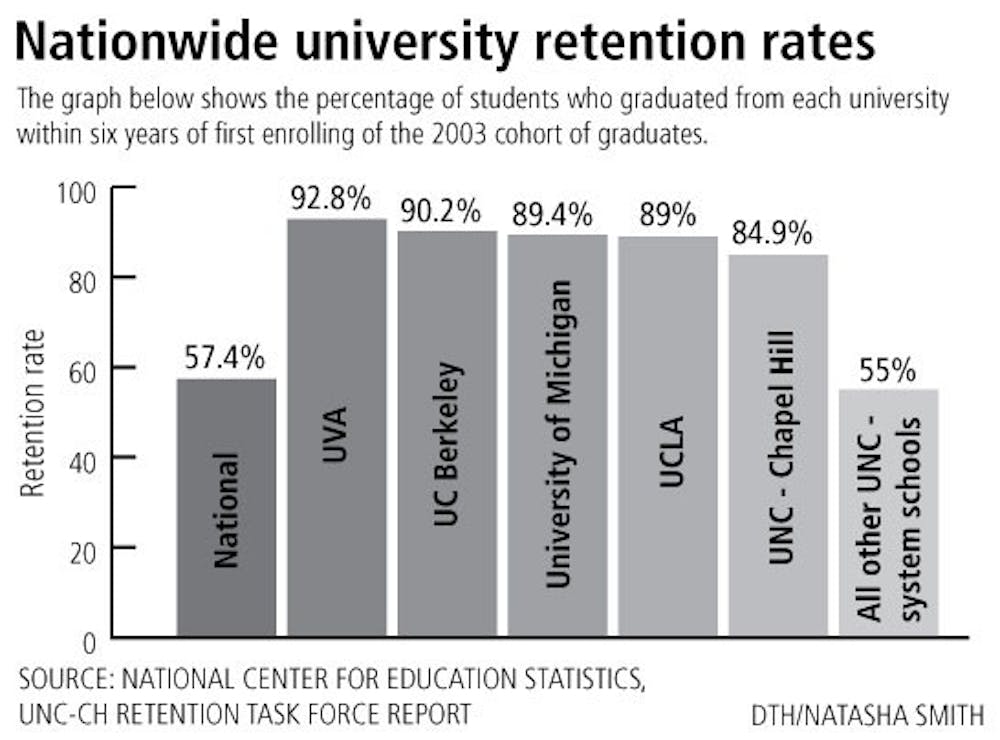Getting into college is not the only challenge faced by students. They also have to stay in.
The Obama administration recently proposed incentives for post-secondary institutions to decrease dropout rates.
The initiative, outlined in a “tool kit” published by the U.S. Department of Education, includes more federal funding, grants up to $20 million and a simplified college transfer process.
President Barack Obama has said he aims to have the highest percentage of college-educated people in the world by 2020, according to the department.
More than 50 percent of students enrolled in a higher education program in the United States do not complete a degree, according to a 2008 study by the Organization for Economic Co-operation and Development.
This graduation rate was the lowest of all member states the organization reviewed. Japan, Korea and Denmark had the highest percentage of college graduates with more than 80 percent of students graduated from college.
At UNC, 84.9 percent of the 2003 cohort — the class that enrolled in 2003 — graduated within six years. This is about 28 percentage points higher than the national 2003 cohort average, but lower than some other public universities’ figures.
“We’ve been working on trying to increase retention and graduation rates here at Carolina for several years,” said Lynn Williford, UNC assistant provost for institutional research and assessment.
UNC emphasizes offering students academic support and trying to engage them outside the classroom, Williford said.




